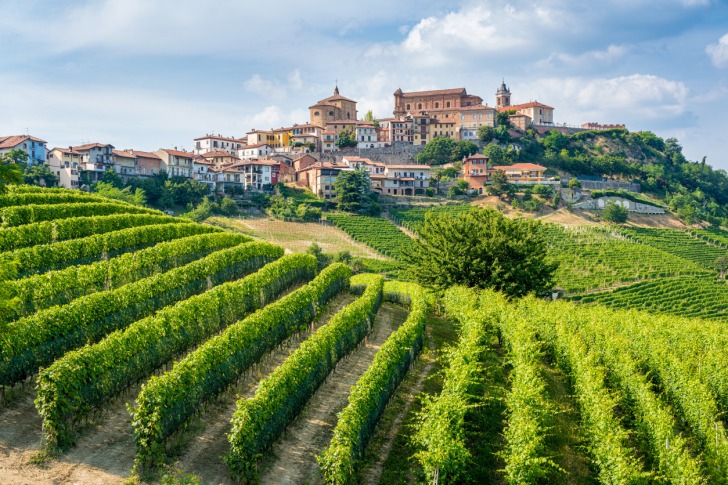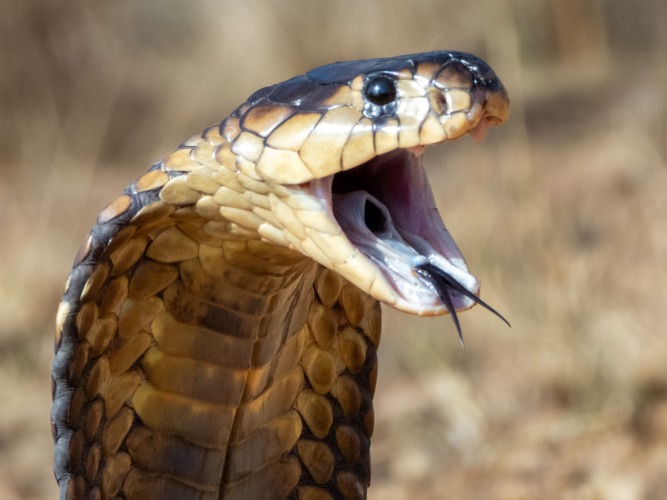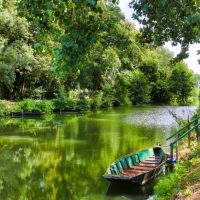Snakes should be of little concern if you plan on traveling to Italy.
While there are over 3,400 snake species worldwide, Italy only has 25.
Out of this number, 4 are venomous.
That doesn’t mean the right location and time of year will not send one across your route.
The following are tips on recognizing common snake species in Italy, staying safe while exploring nature, and knowing what to do in a snake encounter.

Contents
So… Are There Snakes in Italy?
There are 2 families of snakes that reside in Italy
The first family is non-venomous and number 21 in type, which belongs to the family of Colubridae.
The most popular species is the Whip Snake.
While they share similar characteristics, they all have unique markings.
The second family is venomous and has thick bodies and sharp fangs.
They have scales and vertical-shaped pupils.
Their bite releases a potent venom.
However, they are very slow-moving and will only attack when threatened.
Snake Species in Italy
Here are the snake species and their descriptions found in Italy.
1. Whip Snake
Also known as the Balkan Whip Snakes, Horseshow Whip Snake, and Dark Green Snake, they can be found in the northern portion of Italy in rural gardens and low vegetation.
This species is harmless to humans; olive-green or yellowish-brown with dark spots.
Feasting on lizards, giant insects such as grasshoppers, nestling birds, and small mammals,
2. Four-lined Snake
Different types of this species include the Four-lined Snake, Leopard Snake, or Ladder Snake.
They can be found along stone walls, deserted buildings, and sparse woodland along the western coast of the Balkan Peninsula.
Black lines run from the eyes to the tail with a pale brown background.
They feed on rabbits, mice, squirrels, and weasels.[5]
They also feed on birds, lizards, newborn tortoises, and eggs.
3. Smooth Snake
The Smooth Snake, also called the Southern Smooth Snake or Riccioli’s Snake, is small and has shiny scales.
Gray or brown are often seen on a sunny day when they like to soak up the sun.
They are docile and hide in meadows or among rocks to avoid people and predators.
A diet of lizards, small birds, and eggs is their favorite food.
4. Montpellier Snake
Found in northwestern Italy, the Montpellier Snake is a venomous type but rarely strikes humans.
There are few reports of attacks on people, and the venom toxicity is very low.
While they are large with devious eyes, they cause no threat to humans.
Lizards are their main meal, which they find in grassy and rocky areas.
5. Viperine Snake
Found in northwestern Italy, the Viperine Snake or the Viperine Water Snake is not dangerous.
While it does produce venom, its bite on humans is non-toxic.
Possessing brown or red zigzag markings, it feeds on fish and frogs in rivers and lakes.
6. Grass Snake
Olive-green, brown, or gray, the grass snake has an orange, yellow, or white collar and is non-venomous.
Their diet includes insects, tadpoles, frogs, newts, salamanders, fish, toads, lizards, and small rodents.
They prefer the water and are strong swimmers.
7. Dice Snake
Dice snakes are carnivores and feast on fish, frogs, toads, and tadpoles.
They are widespread throughout rivers, lakes, streams, ponds, surrounding grasslands, and coastlines.
8. European Cat Snake
The European Cat Snake is considered a venomous species.
However, because its fangs lie to the rear of the upper jaw, its venom is rarely thrust upon humans.
They can be found in woodlands and forests.
They are brown or gray with blocked markings and large eyes.
9. Italian Aesculapian Snake
The Italian Aesculapian Snake is a giant snake (6-6 1/2 feet) and resides in the boot or heel of Italy.
Yellowish-brown with four dark stripes, they eat lizards, small mammals, and eggs.
Forests and scrublands are their primary habitat, while they can be seen in urban areas.
10. European Rat Snake
The European Rat Snake or Leopard Snake is non-venomous and very colorful.
Often referred to as corn snakes, their similar red colors with black spots are lovely.
Males can grow up to three feet; their favorite food is field mice.

Is it Safe to Go on a Trek in Italy?
Italy is known for hiking and trekking because of the beautiful landscape.
There are a variety of animals that live in the wild, but wild camping is prohibited in almost all of Italy.
However, there are campsites provided for overnight lodging.
Animals like bears and wolves usually are not a threat.
Snakes are scattered about the beaches and rocky regions, but only a few species are venomous.
Most dangers occur when hikers do not practice safe personal conduct.
Walking too close to cliff edges, not preparing for the weather, or inadequate gear and clothing can place you in unsafe positions while trekking.
Interesting Snake Facts in Italy
If you see a snake and think he doesn’t know you are there, think again.
While snakes do not hear sounds, they feel the vibration of the ground with their jaw bones.
So yes, they know you are there.
Don’t freak out if you see a snakeskin.
Snakes shed their 4–12 times a year.
It may be long gone from its skin, but you can bet it is even more significant because it has outgrown its skin and needs to grow a bigger one.
Snakes do not have taste buds on their tongues.
Their tongues are used for smelling.
They have a built-in organ at the top of their mouths that serves as a taste bud, so they can spit out anything harmful to them before swallowing.
3 Safety Tips for Exploring Nature in Italy
Although Italy is considered safe for hiking, precautions must be taken.
- No matter how experienced you are, always take a partner. Mountainous regions can have loose boulders and slippery rocks.
- Wear the right apparel. Hiking boots are a must, and headgear is advised.
- If you encounter a snake or wild animal, never approach it. A snake can be venomous. Wild animals, like wolves, will protect their territory and young. Wait for them to pass or slowly walk away.
Summary
Spending time in nature in Italy can be exciting.
However, knowing the snake types can help you to respect their space.
They will afford you the same courtesy.
Italy Safety Overview
READ THE FULL REPORT: Italy Safety Review
Safety Index:
- OVERALL RISK: LOW
- TRANSPORT & TAXIS RISK: LOW
- PICKPOCKETS RISK: HIGH
- NATURAL DISASTERS RISK: MEDIUM
- MUGGING RISK: LOW
- TERRORISM RISK: MEDIUM
- SCAMS RISK: HIGH
- WOMEN TRAVELERS RISK: LOW
Frequently Asked Questions
How many people are bitten by snakes in Italy each year?
Statistics from 2024 show that there were 4 snake-related deaths per 1 million people in Italy.
Do I need to worry about snakes when camping?
Seal up your tent to prevent snakes from crawling inside.
Keep food airtight.
Why is it illegal to camp in the wild?
Italy, like most European countries, does not want tourists camping in the wild.
It is illegal, and the fines are hefty.
There are alternatives, such as posted campsites or permitted farms where you can sleep in a tent.











